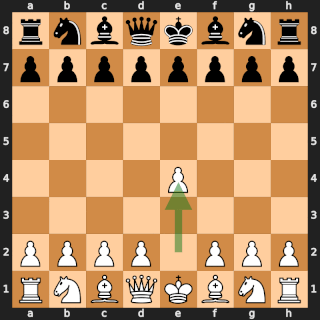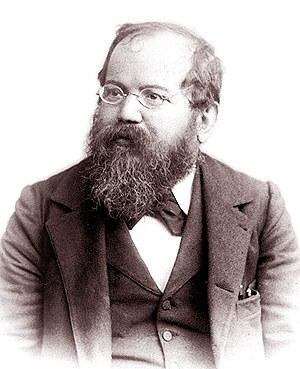
The Opera Game was an 1858 chess game, played at an opera house in Paris. The American master Paul Morphy played against two strong amateurs: the German noble Karl II, Duke of Brunswick, and the French aristocrat Comte Isouard de Vauvenargues. It was played as a consultation game, with Duke Karl and Count Isouard jointly deciding each move for the black pieces, while Morphy controlled the white pieces by himself. The game was played in a box while an opera was performed on stage. Morphy quickly checkmated his opponents following rapid development of material, involving a queen sacrifice.
X3D Fritz was a version of the Fritz chess program, which in November 2003 played a four-game human–computer chess match against world number one Grandmaster Garry Kasparov. The match was tied 2–2, with X3D Fritz winning game 2, Kasparov winning game 3 and drawing games 1 and 4.
The Giuoco Piano is a chess opening beginning with the moves:

The World Chess Championship 1972 was a match for the World Chess Championship between challenger Bobby Fischer of the United States and defending champion Boris Spassky of the Soviet Union. The match took place in the Laugardalshöll arena in Reykjavík, Iceland, and has been dubbed the Match of the Century. Fischer became the first American born in the United States to win the world title, and the second American overall. Fischer's win also ended, for a short time, 24 years of Soviet domination of the World Championship.
The Philidor Defence is a chess opening characterised by the moves:
The Scotch Game, or Scotch Opening, is a chess opening that begins with the moves:
The Würzburger Trap is a chess opening trap in the Vienna Gambit. It was named around 1930 for German banker Max Würzburger.
The Keres Defence is a chess opening characterised by the moves:
Rosendo Carreon Balinas Jr. was a chess grandmaster from the Philippines. FIDE awarded him the International Master title in 1975 and the International Grandmaster title in 1976. He was Philippines' second chess grandmaster. Balinas was a lawyer by profession, as well as an award winning chess writer and journalist.
The Blackburne Shilling Gambit or the Schilling-Kostić gambit is the name facetiously given to a dubious chess opening, derived from an offshoot of the Italian Game, that begins:
Nolot is a chess test suite with 11 very difficult positions from real games. They were compiled by Pierre Nolot for the French chess magazine Gambisco and posted on the rec.games.chess Usenet group in 1994. Some of these positions were particularly hard to solve for chess engines at the time.

Erich Gottlieb Eliskases was a chess player who represented Austria, Germany and Argentina in international competition. In the late 1930s he was considered a potential contender for the World Championship. Eliskases was granted the title of Grandmaster by FIDE in 1952.
In chess, the Cambridge Springs Defense is a variation of the Queen's Gambit Declined that begins with the moves:

Deep Blue versus Garry Kasparov was a pair of six-game chess matches between then-world chess champion Garry Kasparov and an IBM supercomputer called Deep Blue. Kasparov won the first match, held in Philadelphia in 1996, by 4–2. Deep Blue won a 1997 rematch held in New York City by 3½–2½. The second match was the first defeat of a reigning world chess champion by a computer under tournament conditions, and was the subject of a documentary film, Game Over: Kasparov and the Machine.
In chess, the Muzio Gambit, sometimes called the Polerio Gambit, is an opening line in the King's Gambit in which White sacrifices a knight for a large lead in development and attacking chances. It begins with the moves:

The World Chess Championship 1889 was the second official World Chess Championship, and was between Wilhelm Steinitz and Mikhail Chigorin. It took place in Havana, Cuba. Steinitz successfully defended his world title, by being the first of the two players to reach 10½. He won the match 10½-6½.

The 1935 World Chess Championship was played between challenger Max Euwe and title-holder Alexander Alekhine. It was played in various cities and towns in the Netherlands from October 3 to December 16. Euwe was the winner by overcoming a three-point deficit as late as the ninth game.
Angus Dunnington is an English poker and online gambling specialist and former professional chess player with the title of International Master (IM). Dunnington is most known for his extensive work in chess opening theory, as well as the psychological aspects of both chess and poker. He stopped playing competitive chess in 2003 in order to spend more time writing, has been a recipient of a Chess Journalists of America award, penned over 1,000 articles and is the author of over 20 books, subjects including chess psychology, unorthodox chess openings and online gambling.
The 1992 Fischer–Spassky match between former world chess champions Bobby Fischer and Boris Spassky was billed as a World Chess Championship, though it was an unofficial rematch of their 1972 World Championship match. Fischer won 10–5, with 15 draws.
The McDonnell Gambit is a chess opening gambit in the King's Gambit, Classical Variation that begins with the moves:






